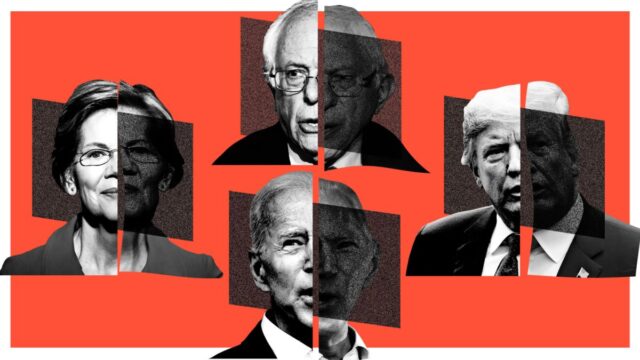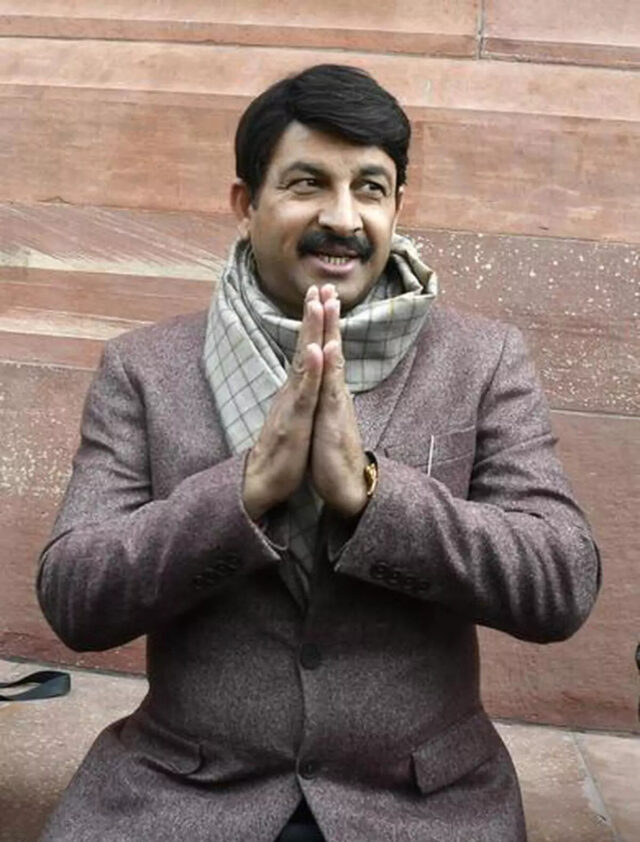In the modern landscape of elections, the integration of technology has continually shaped the campaign process. From phone calls in the 1990s to the dominance of social media platforms like Facebook, Twitter, and WhatsApp in recent years, evolving technological advancements have played a pivotal role.
However, this progress has come with its challenges, especially in the realm of misinformation and the rise of deep fakes. Deep fakes, AI-generated videos, or audios that appear authentic, pose a significant concern in influencing voter decisions and potentially altering the trajectory of geopolitics. With recent incidents in various countries, including Bangladesh’s parliamentary elections and instances in India, the discussion surrounding the impact of deep fakes on elections has gained momentum.
Rise Of Deep Fakes In Political Context
Divyendra Singh Jadoun, engaged in AI-based visual effects in India, faced a dilemma when approached by politicians seeking AI-generated campaign videos. The absence of regulations on deep fakes amplifies concerns about their potential influence on voting behavior. Divyendra Singh Jadoun’s encounter with politicians requesting AI-generated campaign videos encapsulates a significant ethical dilemma surrounding the use of deep fake technology in political contexts. His hesitation highlights the absence of robust regulations governing the creation and dissemination of deep fakes, intensifying concerns regarding their impact on the electorate’s decision-making process.
Also Read: What Is The AI Deepfake Problem PM Modi Is Cautioning Us About
In anticipation of the upcoming general election in India, where the likelihood of Prime Minister Modi securing a third term is widely anticipated, Jadoun, who previously declined to create deep fake campaign videos for state elections, is now preparing to produce them for the national polls. These videos will take the form of personalized messages from politicians intended for party workers, rather than directly targeting voters, and will be distributed via WhatsApp.
Jadoun emphasized the potential impact of these videos, noting, “They can truly make a difference because there are hundreds of thousands of party workers who will subsequently share them with their circle of friends and family.” He also stressed the importance of transparency in the videos’ production process, stating, “However, we will include a watermark indicating that the content is AI-generated to ensure there is no confusion. This aspect is crucial.”
What Happened In Bangladesh?
The emergence of deep fake videos during Bangladesh’s elections offers a poignant example of the substantial influence wielded by manipulated content in shaping public perceptions. In the political landscape of Bangladesh, preceding Prime Minister Sheikh Hasina’s re-election for a fourth consecutive term following the January 7th polls, there were incidents involving the circulation of deep fake videos.
During this period, manipulated videos surfaced featuring female opposition politicians Rumin Farhana and Nipun Roy. These videos purportedly depicted Rumin Farhana in a bikini and Nipun Roy in a swimming pool. Despite swift debunking attempts, these manipulated videos persisted in circulating across various social media platforms. Concerns were raised by experts like Sayeed Al-Zaman, an assistant professor of journalism at Bangladesh’s Jahangirnagar University, about the potential of even low-quality deep fake content to mislead individuals, particularly in a country where levels of information and digital literacy might be comparatively low.
The emergence and propagation of these deep fake videos underscored worries about their ability to influence public opinion, particularly in an environment where distinguishing authentic content from manipulated material might be challenging due to limited digital literacy. However, the precise impact of these videos on election outcomes or voter behavior remains uncertain.
Sayeed Al-Zaman, an assistant professor of journalism at Bangladesh’s Jahangirnagar University, aptly points out, “Given the low levels of information and digital literacy in Bangladesh, deep fakes can be potent carriers of political propaganda if crafted and deployed effectively.”
This sentiment resonates with the broader concern articulated by tech experts globally. Divyendra Singh Jadoun himself acknowledges the worrisome aspect of deep fake technology, stating, “The technology to create deep fakes is so good now, it can be done almost instantaneously, with very little effort – and people cannot tell if it’s real or fake.“
Freedom House, a U.S.-based non-profit organization, highlights the accelerating pace of disinformation facilitated by AI, emphasizing how it amplifies the spread of misinformation, making it faster, cheaper, and more effective.
The impact of deep fakes is not confined to a single region. The potential for these manipulated videos to sway voter opinion has caught the attention of Prime Minister Narendra Modi, who referred to deep fakes as a “big concern.” The Indian government’s warnings to social media platforms regarding their liability for third-party content reflect the gravity of the situation.
Raman Jit Singh Chima, Asia policy director at Access Now, underscores the alarming scenario, expressing concerns about the inadequacy of platforms in handling this issue. He states, “Platforms are not set up to handle problems, and they are not being responsive and proactive enough. And that’s a very dangerous sign.“
The Menace Of Misinformation Through AI
Platforms such as Meta (which owns Facebook, Instagram, and WhatsApp) and Google have taken several measures to address the challenge posed by the proliferation of deep fakes and synthetic media.

Meta and Google have developed and implemented detection tools to identify and remove synthetic media content from their platforms. These tools utilize AI and machine learning algorithms to spot potential deep fakes by analyzing patterns, inconsistencies, or alterations within the content.
Google, specifically on its YouTube platform, has enforced policies requiring creators to disclose altered or synthetic content that may appear realistic. This disclosure ensures that viewers are informed about the nature of the content they are viewing. These platforms collaborate with third-party fact-checking organizations to verify and label potentially misleading or false information, including deepfakes. Once flagged, the content is subjected to additional scrutiny and warnings are issued to users.
Companies like Meta and Google continue to invest resources in research and development to enhance their AI algorithms’ capabilities in detecting and combating synthetic media. These efforts aim to stay ahead of the evolving techniques used to create deep fakes.
Despite these initiatives, the rapid advancements in AI and deep fake technology present an ongoing challenge. The sheer volume and sophistication of synthetic media pose difficulties in accurately detecting and removing every instance of manipulated content. Additionally, the global scale of social media platforms makes it challenging to uniformly enforce content moderation policies across diverse regions and languages.
Furthermore, while countries like India and Bangladesh have enacted laws to regulate online content and combat misinformation, implementation and enforcement remain challenging. Social media platforms must navigate these varying regulatory environments while balancing the preservation of free expression and the integrity of information shared on their platforms.
Implications For Indian Elections And Geopolitics
Prime Minister Narendra Modi highlighted the threat posed by deep fakes, referring to them as a “new age sankat.” The impact of AI-generated content in elections has been evident, as seen in incidents during India’s local elections. The susceptibility of voters to misleading information disseminated through deep fakes adds an unprecedented layer of uncertainty to electoral processes. During various state elections in India, there were instances where deep fake technology became a significant factor in shaping the electoral discourse.
For instance, during the 2020 Delhi Assembly elections, videos emerged featuring the then-state Bharatiya Janata Party (BJP) president Manoj Tiwari apparently criticizing Chief Minister Arvind Kejriwal’s policies in multiple languages. These videos were widely circulated, signaling the intrusion of AI-manipulated content into the electoral landscape.

Similarly, in states like Madhya Pradesh and Telangana, as elections approached, there were notable occurrences. One such incident involved a doctored video clip derived from the ‘Kaun Banega Crorepati’ (KBC) quiz show, depicting the BJP’s leader in Madhya Pradesh, Shivraj Singh Chouhan, in an unfavorable light. These incidents illustrated how deep fake technology became a strategic tool in political battles, manipulating content to influence public perceptions.
These instances underscored the infiltration of deep fake technology into the narrative during state elections in India, highlighting the potential threat posed by manipulated content in shaping voter opinions and, consequently, impacting electoral outcomes.
The Future Of Deep Fakes And Election Integrity
As the technology powering deep fakes evolves, the potential for their use in influencing elections grows. The ease of creating and circulating such content raises concerns about its impact on democratic processes. Despite efforts to address this issue, the rapid improvement in the quality of deep fakes poses a significant challenge to identifying and countering them effectively.
The specter of deep fakes looms large over the democratic process, particularly in the context of crucial elections globally. The rise of AI-generated content, capable of deceiving viewers into believing in its authenticity, presents a formidable challenge to election integrity. As nations grapple with regulations and platforms endeavor to detect and remove synthetic media, the need for proactive measures to combat misinformation through deep fakes remains urgent. The forthcoming elections, especially India’s Lok Sabha polls, stand as test cases for the resilience of democracies against the threat of manipulated content disseminated via AI technology. The impact of deep fakes on voter behavior and electoral outcomes underscores the critical importance of addressing this issue comprehensively to safeguard the sanctity of democratic processes worldwide.
Image Credits: Google Images
Feature image designed by Saudamini Seth
Sources: Economic Times, The Hindu, Financial Times
Find the blogger: Katyayani Joshi
This post is tagged under: Deep fake, AI Misuse, Narendra Modi, Technology, Privacy Concerns, Social Media, Misinformation, Verification Challenges, political ramifications, Public Awareness, Reputational Damage, Cybersecurity, Media Responsibility, Technological Innovation, Malicious Intent, Penalties, Digital Age, Information Security, elections, lok sabha election, elections 2024, Bangladesh, India
Disclaimer: We do not hold any right, copyright over any of the images used, these have been taken from Google. In case of credits or removal, the owner may kindly mail us.
Other Recommendations:
ED VoxPop: We Ask Gen Z If Ayodhya Ram Temple Matters To Them































